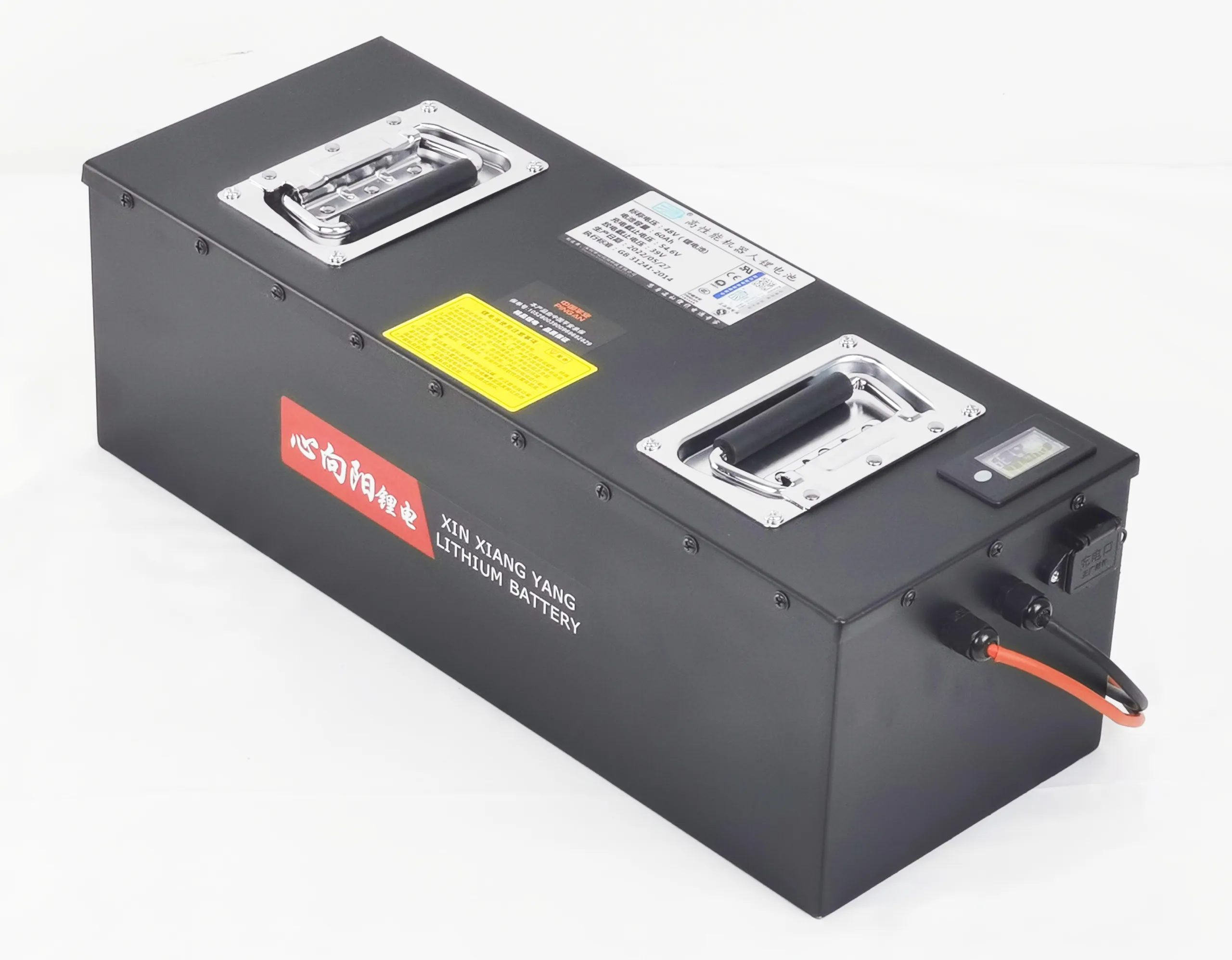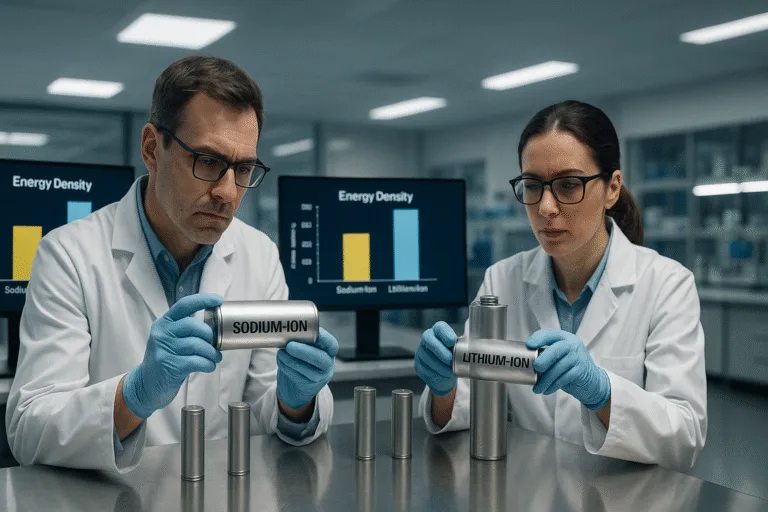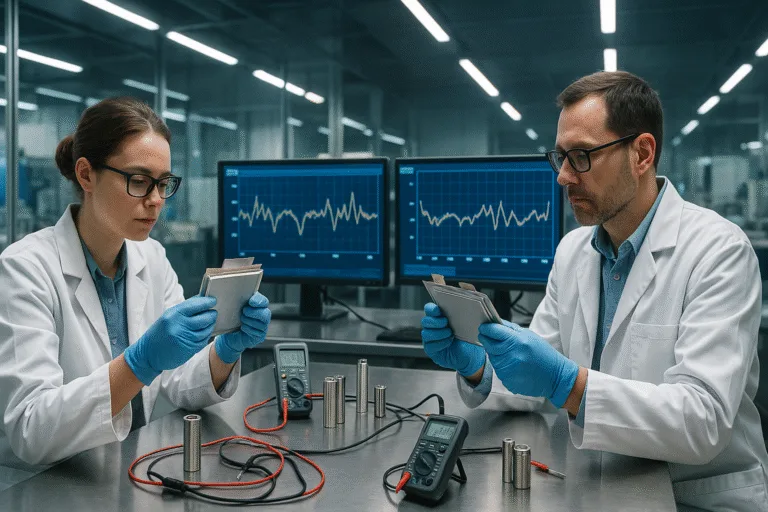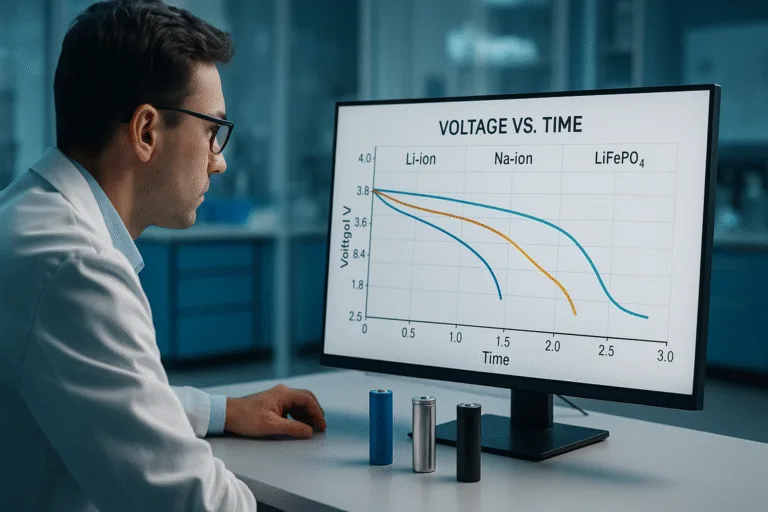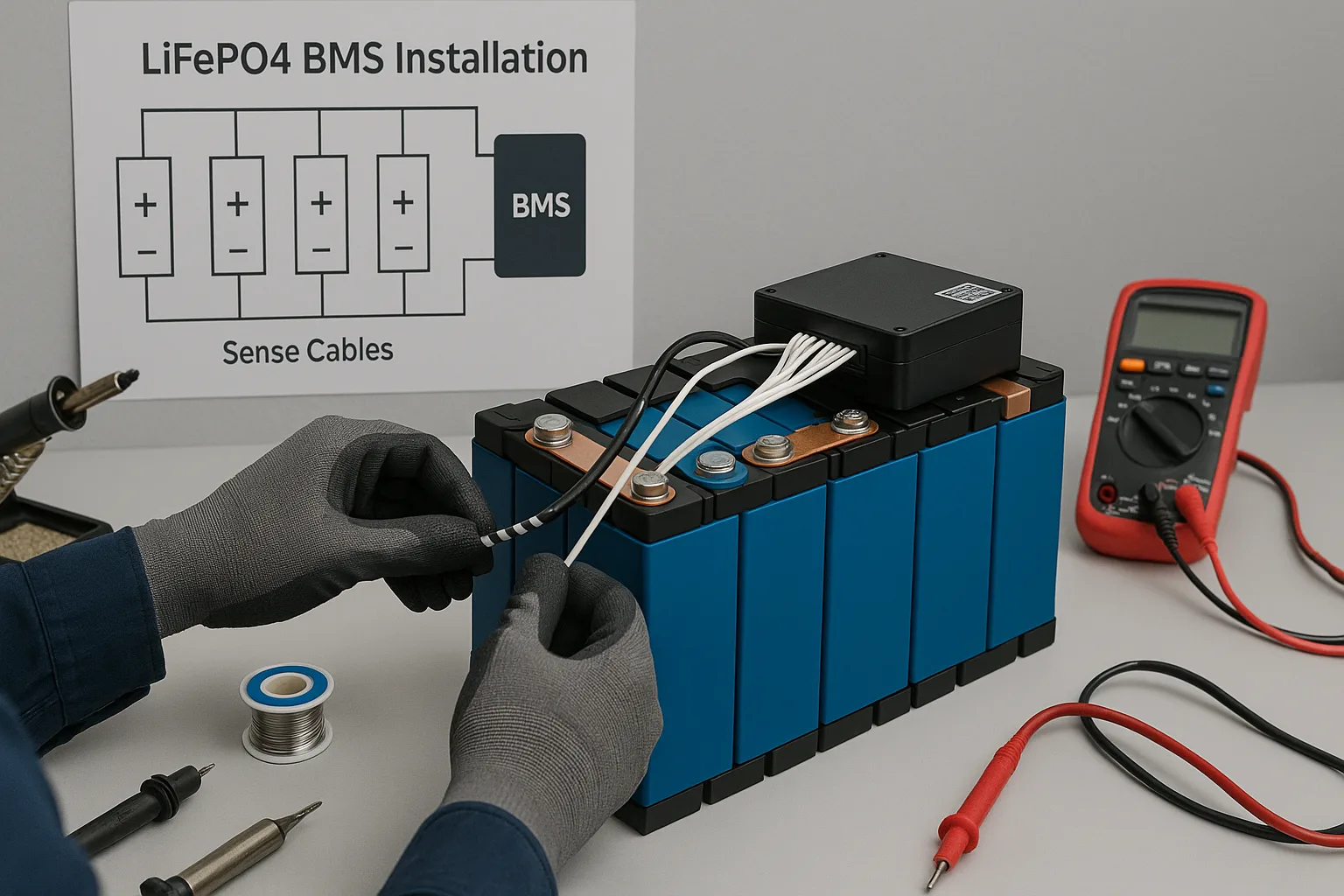
Ever worried your LiFePO4 batteries might fail prematurely or become unsafe? You’re not alone. Understanding battery management is crucial for performance and safety.
Yes, LiFePO4 batteries absolutely require a Battery Management System (BMS). A BMS protects cells from damage due to overcharging, over-discharging, imbalance, and ensures longevity and safe operation.
I once saw a client overlook a BMS setup, resulting in costly battery replacements. Let’s ensure you avoid that.
Why Does a LiFePO4 Battery Require a BMS?
Many new users wonder why exactly LiFePO4 cells need special management.
LiFePO4 cells need a BMS1 to monitor individual cell voltages, manage charging and discharging currents, maintain cell balance, and prevent unsafe conditions2 like overcharging or overheating.
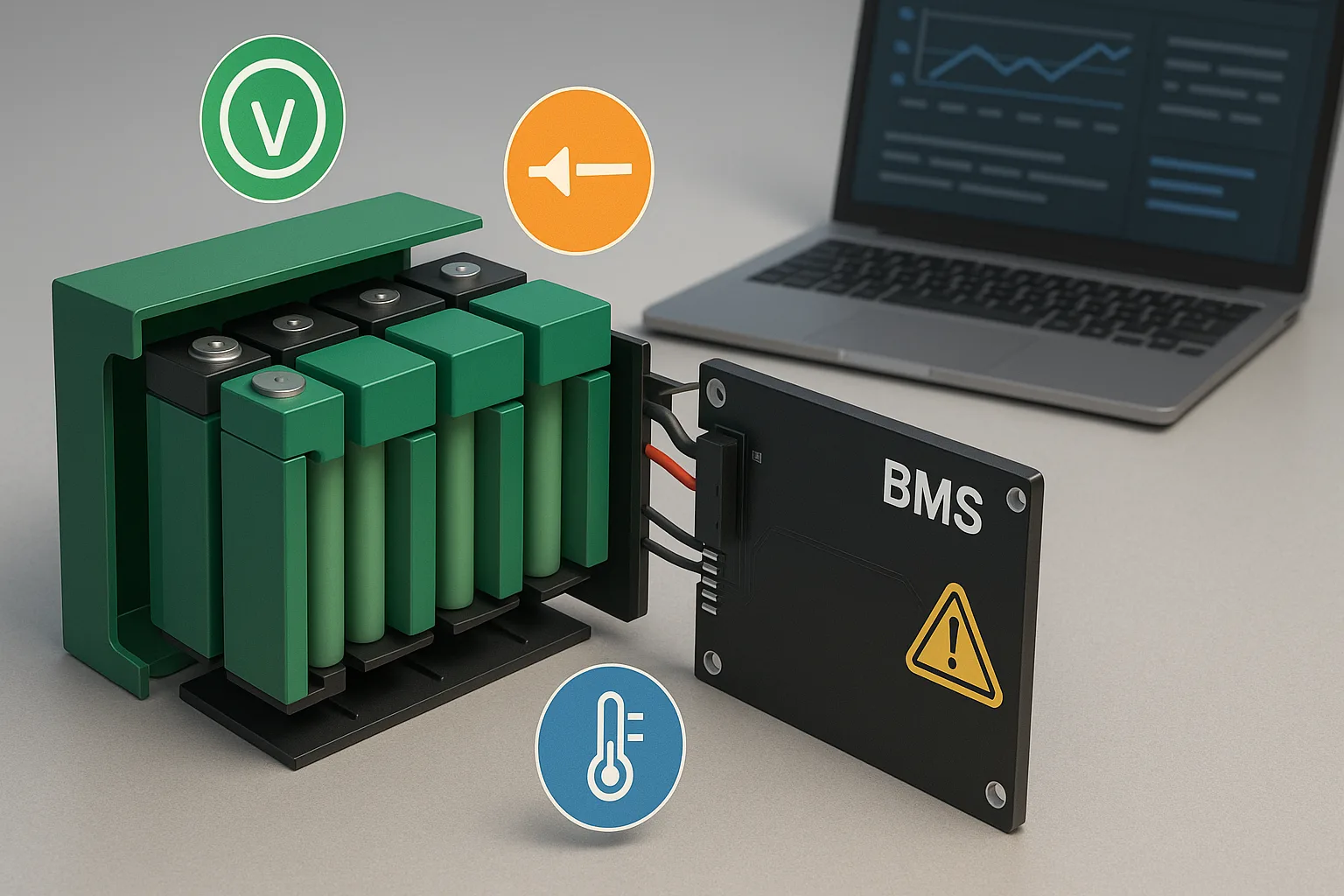
Reasons a BMS is Essential
LiFePO4 batteries are safer than other lithium types but still require careful management. Here’s why:
Preventing Damage
A BMS prevents harmful scenarios like deep discharge or overcharging, both damaging the battery permanently.
Cell Balancing
Individual cells naturally vary in capacity and voltage. A BMS balances these differences, extending overall battery lifespan.
Ensuring Safety
By cutting off power during overheating, short circuits, or voltage abnormalities, the BMS ensures user safety and battery integrity.
| Key BMS Functions | Benefits |
|---|---|
| Voltage Monitoring | Prevents damage to individual cells |
| Temperature Control | Stops overheating, preventing fires |
| Current Regulation | Ensures safe charging and discharging |
| Balancing Cells | Maintains optimal battery health |
LiFePO4 batteries are safe enough to run without a BMS.
False
A BMS monitors, balances, and protects LiFePO4 cells.
True
What Is the Best LiFePO4 Battery Management System?
If you’re investing in a LiFePO4 setup, you’ll want the best possible BMS.
The best LiFePO4 BMS3 brands include Daly, Overkill Solar, JBD, and Victron. These brands offer robust features, reliability, accurate monitoring, and strong safety protections.
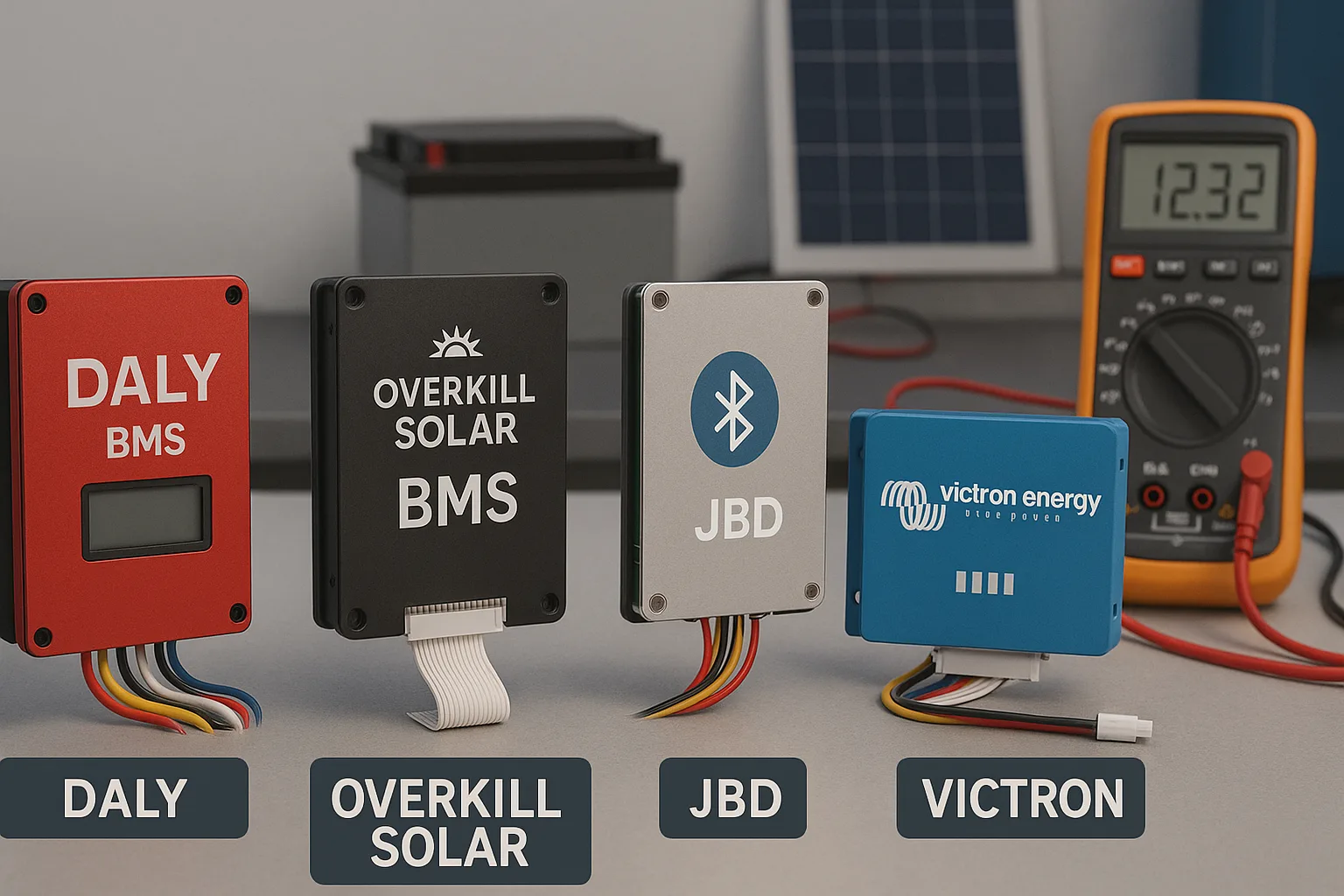
Top LiFePO4 BMS Options
Choosing the right BMS depends on your specific requirements:
Daly BMS4
- Widely recommended due to cost-effectiveness and reliability.
- User-friendly interfaces and smartphone connectivity.
Overkill Solar BMS
- Preferred by solar energy enthusiasts for advanced programmable options.
- Supports detailed data logging and Bluetooth connectivity.
JBD Smart BMS
- Known for strong build quality and reliable performance.
- Excellent temperature control and voltage accuracy.
Victron Energy BMS5
- Premium choice offering robust integration with other Victron components.
- High precision and professional-grade features.
| Brand | Best For | Connectivity |
|---|---|---|
| Daly | General, Cost-effective | Bluetooth |
| Overkill Solar | Solar, DIY Systems | Bluetooth, PC |
| JBD | Robustness & Safety | Bluetooth, RS485 |
| Victron Energy | Professional Systems | Bluetooth, VE.Direct |
Selecting a BMS brand aligned with your needs ensures long-term reliability and safety.
Daly and Overkill Solar are top BMS brands.
True
All BMS units work the same regardless of the application.
False
What Is the Correct BMS Setting for a LiFePO4 Battery?
Many LiFePO4 battery users are confused about proper BMS settings6.
Typical LiFePO4 BMS settings: charge cutoff ~3.65V/cell, discharge cutoff ~2.5V/cell. Recommended charging voltage7 ~14.4-14.6V for a 12V pack and balancing typically at 3.4V per cell.
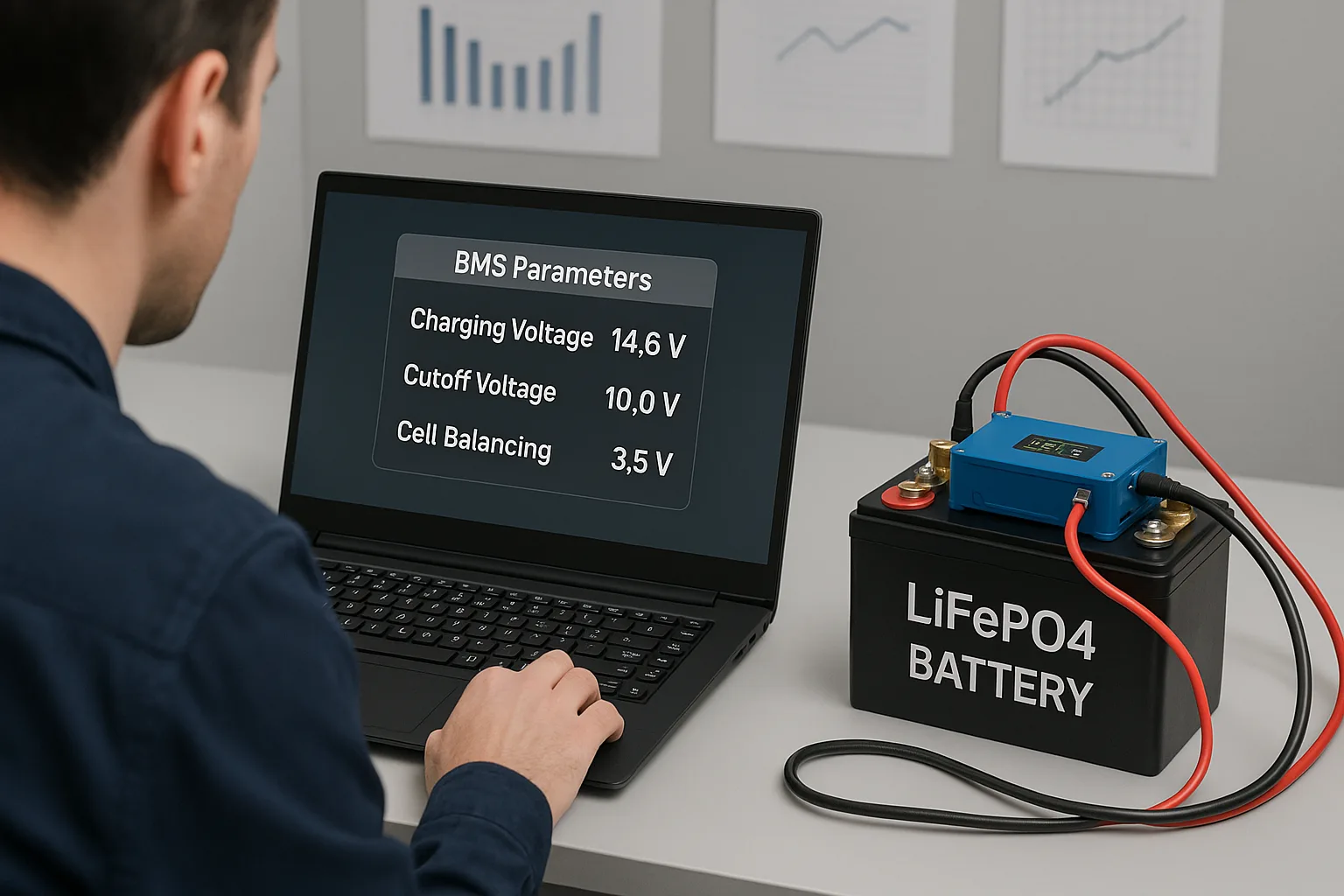
Key LiFePO4 BMS Settings
Proper BMS settings maximize your battery’s lifespan and safety. Here’s a simplified table for a 12V LiFePO4 pack:
| Parameter | Recommended Setting |
|---|---|
| Max Charge Voltage | 14.4-14.6V (3.6-3.65V per cell) |
| Max Discharge Cutoff | 10.0-10.8V (2.5-2.7V per cell) |
| Cell Balancing Voltage | Approximately 3.4V per cell |
| Temperature Protection | 0°C – 60°C |
Ensure your BMS settings match these guidelines to avoid battery damage, maintain performance, and increase longevity.
BMS charge cutoff should be around 3.65V per cell.
True
LiFePO4 cells should be balanced at 4.2V like Li-ion cells.
False
How Do You Install a BMS on a LiFePO4 Battery?
If you’re wondering how to install a BMS on your LiFePO4 battery pack, here’s a straightforward guide.
Installing a BMS involves connecting its sense wires to individual battery cells in the correct order, attaching main power wires, and setting proper charge and discharge parameters.

Step-by-Step Installation Guide
Step 1: Organize the Components
Gather your LiFePO4 cells, BMS, wiring harness, and necessary tools (voltmeters, soldering iron, connectors).
Step 2: Connect Cell Sense Wires
Carefully connect BMS wires to each cell, starting from the negative end. Check polarity carefully.
Step 3: Connect Main Power Leads
Attach main negative (B-) from battery negative to BMS and battery positive directly to the load or charger.
Step 4: Configure Settings
Set charging and discharging parameters on your BMS according to battery specifications mentioned earlier.
Step 5: Verify Installation
Use a voltmeter to verify all connections and confirm correct voltages and wiring order before use.
| Installation Step | Critical Tips |
|---|---|
| Sense Wire Connection | Ensure accurate cell order |
| Main Power Leads | Confirm tight, secure connections |
| Parameter Settings | Follow manufacturer instructions |
| Verification | Double-check voltages carefully |
Proper installation safeguards your battery investment and ensures long-term reliability.
You only need to connect the BMS to one cell in the battery pack.
False
Verifying wire order and polarity is essential after BMS installation.
True
Conclusion
LiFePO4 batteries need a properly set up and reliable BMS. Understanding this setup guarantees safer operation, extended lifespan, and optimal battery performance in your projects.
-
Understanding the necessity of a BMS for LiFePO4 cells can enhance battery safety and performance. Explore this link for detailed insights. ↩
-
Learn how a Battery Management System safeguards against risks like overcharging and overheating, ensuring safety and reliability. ↩
-
Explore this link to discover comprehensive reviews and comparisons of the best LiFePO4 BMS options, ensuring you make an informed choice. ↩
-
Learn more about Daly BMS features and benefits, which are crucial for cost-effective and reliable battery management. ↩
-
Discover why Victron Energy BMS is considered a premium option, including its integration capabilities and professional-grade features. ↩
-
Learn the best practices for configuring BMS settings to optimize the performance and safety of your LiFePO4 batteries. ↩
-
Discover the ideal charging voltage for LiFePO4 batteries to ensure efficient charging and prolong battery life. ↩

